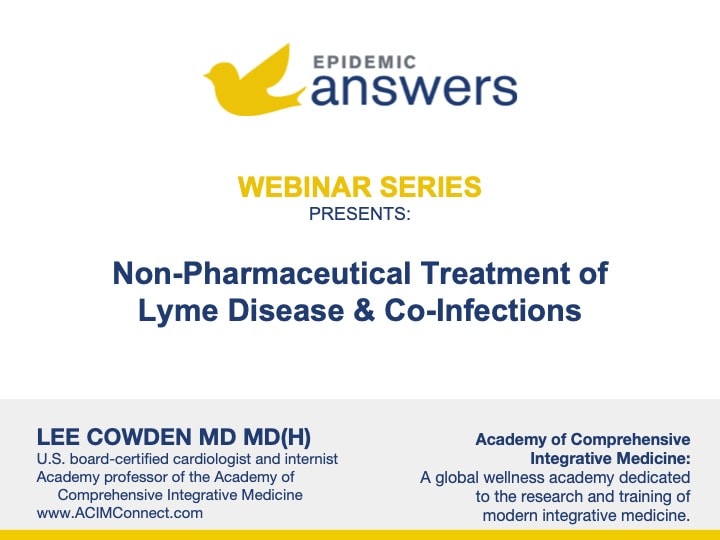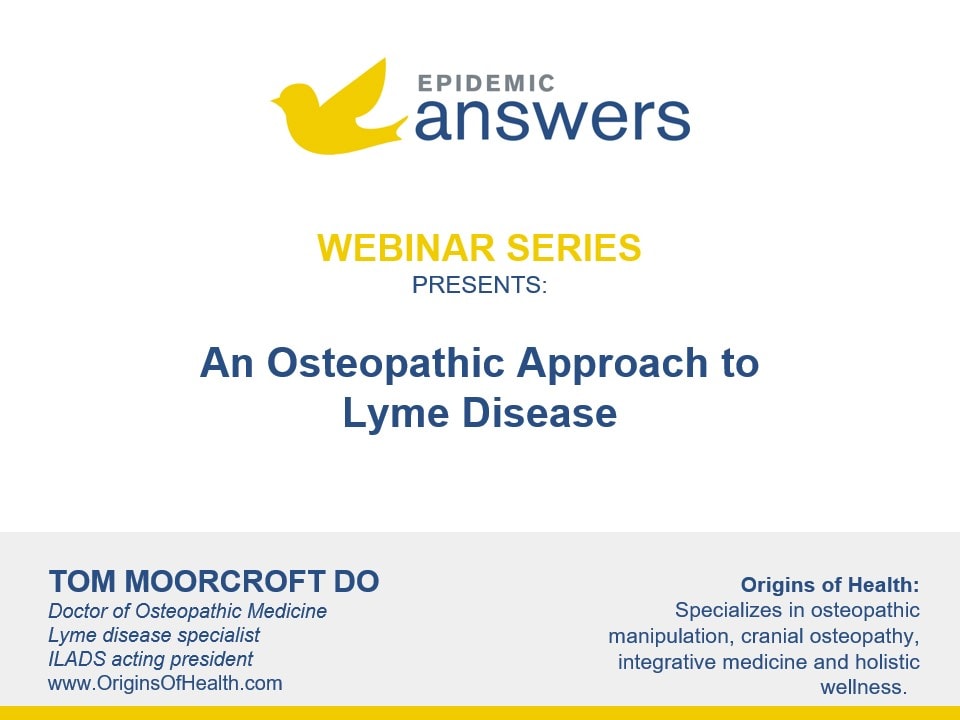What Is Lyme Disease?
Lyme disease is a tick-borne illness infectious disease transmitted to humans by a black-legged deer tick; these ticks may carry up to twenty diseases. It was first reported in 1975 in the town of Old Lyme, Connecticut in the United States. Thirty-nine children were diagnosed with juvenile rheumatoid arthritis, and 12 adults were diagnosed of arthritis of an unknown cause.
Wilhelm Burgdorfer, a scientist who was studying Rocky Mountain Spotted Fever, discovered the tick connection along with the bacterium, a spirochete, that causes Lyme. The tick becomes infected after feeding on infected mice or deer. The tick must be on the skin 24 to 48 hours to transmit the infection.
Wooded outdoor areas for camping and hiking are prime areas where these deer ticks can be found. Domestic animals let out to roam the woods may also carry ticks.
Two of the bacteria species that cause Lyme disease are Borrelia burgdoferi and Borrelia mayonii, and these are found in the United States. The other two bacteria species are Borrelia afzelii and Borelia garinii. and theses are found in Europe and Asia. There are five sub-species of Borrelia burgdorferi, and of these subspecies, there are more than 100 strains in the U.S. and 300 worldwide.
Symptoms of Lyme Disease
Lyme disease occurs in three stages: early localized, early disseminated and late disseminated. Symptoms will depend on the different stages.
Stage 1: Early Localized Disease
Symptoms will begin to appear within one to two weeks of being bitten by the tick. One of the earliest signs is a bull’s-eye rash which means that the bacteria are multiplying rapidly in your bloodstream. The rash occurs at the tick-bite spot and is a red spot surrounded by a clear spot with red edges. It may be warm to touch but will disappear in about four weeks. The rash is called erythema migrans, and it is characteristic of Lyme; some people have a rash that is solid red, and others with olive tone skin may have a rash that resembles a bruise.
Stage 2: Early Disseminated Lyme Disease
This stage of the disease happens several weeks after the bite. Bacteria is spreading throughout the body, and many people begin to have flu-like symptoms:
- Chills
- Fever
- Enlarged lymph nodes
- Sore throat
- Vision changes
- Fatigue
- Muscle aches
- Headaches
There may be rashes appearing in other areas of the body. Neurological signs of Bell’s Palsy or numbness and tingling may occur. Meningitis or the cardio conduction system may also be affected at this stage.
Stage 3: Late Disseminated Lyme Disease or Post Treatment Lyme Disease Syndrome (PTLDS)
When the disease has progressed and not been treated in the earlier stages, then symptoms of congestive heart failure may occur because the disease spreads to the nervous system, heart and joints:
- Severe headaches
- Arthritis
- Heart rhythm disturbances
- Brain disorders involving memory, mood and sleep
- Short-term memory loss
- Focus and concentration difficulties
- Cognitive impairment
- Brain fog
- Speech conversation issues
- Numbness in extremities (arms, legs, hands and/or feet)
- Loss of motor coordination
- Severe muscle spasms
- Meningitis
- Intermittent paralysis
- Sensory processing issues
- Vision processing issues
- Auditory processing issues
Lyme Co-Infections
Co-infections are extremely common in Lyme disease and can cause consternation in treatment because as one infection is diminished, a co-infection takes over, leading to “whack-a-mole” and a recurrence of symptoms or emergence of new symptoms. These co-infections are important to consider and test for when testing for Lyme. Some possible co-infections include:
- Roundworms
- Tapeworms
- Threadworms
- Toxoplasmosis
- Giardia
- Amoebas
- Clostridia
- Parvovirus B19
- Active measles (in the small intestine)
- Herpetic viruses such as:
- Epstein-Barr virus
- Human Herpes Virus #6
- Cytomegalovirus
- Shingles
- Leptospirosis
- Pneumonia
- Coxsackie virus
- Chronic strep infections and their mutations
- Babesia
- Brucella
- Ehrlichiosis
- Bartonella
- Mycoplasma
- Rickettsia
- Bartonella
- Rocky Mountain spotted fever
Babesia
Babesia is a piroplasm parasite rather than an infection and can be passed on from a mother to an unborn child or through blood transfusions. Blood banks do not screen for the presence of Babesia. Cucurmin is anti-inflammatory with antimalaria compounds and can help attenuate Babesia symptoms such as:
- Fatigue
- Shortness of breath
- Hip pain
- Chest pain
- Muscle aching
- Excessive sweating (night sweats)
Bartonella
Bartonella is a form of bacteria that lives within the blood vessel linings of the body. The bacteria move through red blood cells, making it difficult to destroy; consequently patients suffer from relapse of symptoms such as:
- Fatigue
- Fever
- Headache
- Problems with appetite
- Strange rash like stretch marks
- Lymph nodes may swell
- Psychiatric symptoms such as anxiety
Ehrlichia
Ehrlichia is a general term to describe a host of bacterial diseases including anaplasmosis. Symptoms are similar:
- Headaches
- Muscle aches
- High fever
- Fatigue
- Severe conditions:
- Low platelet count
- Anemia
- Kidney failure
Mycoplasma
These are very tiny bacteria – 4,000 of them can fit within a single red blood cell. Mycoplasma infection is one of the primary causes of rheumatoid arthritis. They can cause pneumonia and have been linked to:
- Tourette’s syndrome
- Autism Spectrum Disorders
- PANS/PANDAS
- Amyotrophic Lateral Sclerosis (ALS)
Mycoplasma often provoke autoimmune issues and can be linked to magnesium deficiency. Symptoms of infection can include:
- Headache
- Fatigue
- Fever
- Cough
- Sore throat
Rocky Mountain Spotted Fever (RMSF)
This tick-borne infection is caused by an interaction with the bacterium Rickettsia; the illness can be spread through the bite of various infected tick species including the Rocky Mountain wood tick. Symptoms include:
- Abdominal pain
- Fever
- Headache
- Muscle pain
- Vomiting
- Conjunctival injection
- Lack of appetite
- Abdominal pain
This fever can be fatal if not treated within the initial few days of symptoms. These patients do not do well with sulfa drugs.
Epstein Barr Virus (EBV)
Up to 95% of the world population may be infected with EBV – a virus found within the herpes family. EBV uses DNA methylation to hide from the immune system and stays within the resting memory B cells. B cells change with the immune system, protecting the virus and allowing it to proliferate without being detected. Symptoms can include:
- Spleen enlargement
- Swollen lymph nodes
- Sore throat
- Fever
- Fatigue
- Possible jaundice
Human Herpes Virus-6 (HHV-6)
HHV-6 is a herpes virus discovered in the mid-80s and is active in almost all Lyme disease patients. Even though HHV-6 is a co-infection, it is really an opportunistic virus waiting to strike. Symptoms can include:
- Fatigue
- Neurological symptoms
- Concentration issues
- Memory issues
- Possible connection to cancer through protein P53
What Your Doctor May Tell You About Lyme Disease
Your child’s doctor will probably want to know the specific symptoms your child has experienced and your child’s complete medical history. Some doctors may not even consider Lyme disease or will misdiagnose it; this is a very common scenario. If your child has autism, PANDAS (Pediatric Autoimmune Neuropsychiatric Disorders Associated with Streptococcal Infections) or PANS (Pediatric Acute-onset Neuropsychiatric Syndrome), it is most likely your doctor will not consider Lyme disease as comorbid with these diagnoses.
Typical Western Medicine Treatment of Lyme Disease
Your child’s doctor may typically address your child’s behavioral and emotional symptoms with psychotropic pharmaceuticals such as anti-depressants. However, anti-depressants typically have a “black box” warning against these medications by children because they can increase the risk of more aggressive behavior and suicide ideation.
More forward-thinking Western medical doctors now understand that PANS and Lyme disease are typically caused by a pathogenic infection and/or acute environmental toxic assault. To that end, typical treatments include:
Antibiotics
Antibiotics must often be given over several weeks or months to see improvement. Many children require multiple rounds of antibiotics, and some stay on antibiotics prophylactically for years. However, recent research has shown that antibiotics severely alter, often permanently, the microbiome in the gut, which is where most of the body’s immune system is.
In essence, giving antibiotics may “win the battle, but lose the war” because they can alter the body’s immune function and often cause an overgrowth of fungus, such as from Candida albicans. In addition, antibiotics only work against bacterial infection, so they won’t help in the case of viral, parastic or fungal infection as well as environmental toxic assault.
Steroids and NSAIDs
Both steroids and NSAIDs (Non-Steroidal Anti-Inflammatory Drugs) have been documented to reduce symptoms in children with Lyme disease, which is a clue that inflammation is part of what’s behind the child’ symptoms. However, long-term use of either of these kinds of pharmaceuticals is hard on the body and can cause strain on the liver’s detoxification process as well as lead to nutritional deficiencies, thereby potentially leading to additional symptoms further on down the road. In addition, steroids can disrupt the microbiome in the gut, which can lead to more symptoms later on.
Testing for Lyme Disease
Lyme Disease Specific Testing
If your doctor considers Lyme disease, they will likely use a common medical blood test that checks the antibodies to whatever Lyme disease bacteria your child has. The Enzyme-Linked ImmunoSorbent Assay (ELISA) is recommended by most doctors for Lyme disease, and the Western Blot antibody test is also given to confirm the results of the ELISA.
Your child may have to do other tests such as an MRI, EKG or spinal tap, depending on the areas affected by the Lyme disease. Conventional lab tests are not always reliable, however; for a more accurate lab test, consider the test from I-Genex Labs.
It is important to note that titers are NOT always indicative of an infection.
Titers are often only moderately elevated, or not elevated at all in some children with Lyme disease. Because lab tests are not always reliable, the diagnosis of Lyme disease is a clinical diagnosis. This means that your healthcare provider may base his or her diagnosis on your child’s history and symptoms.
PANS Specific Testing
Because PANS (Pediatric Acute-onset Neuropsychiatric Syndrome) is the broader umbrella under which Lyme disease falls, additional testing may need to be done to check for:
- PANDAS (Pediatric Autoimmune Neuropsychiatric Disorders Associated with Streptococcal Infections)
- Specific viruses, especially herpetic viruses such as Epstein-Barr virus and herpes simplex viruses
- Pathogenic bacterial infection, such as Staphylococcus aureus
- Mycoplasma pneumoniae infection
- Influenza infection
- Heavy metals and other toxins
- Mold toxicity with a test from Mycometrics: mold-toxicity and Lyme symptoms are often the same. However, it is possible and common that a person with Lyme disease also has mold toxicity.
Please remember that is quite possible, and often common, for a child to have multiple infections simultaneously, so it is a good idea to test for all of the above triggers before deciding on a course of action.
Another Way to Think About Lyme Disease
Maternal Inheritance
Many cases of Lyme-induced Autism Spectrum Disorders and Lyme-induced PANDAS and PANS are occurring because a whole generation of women have been misdiagnosed with other autoimmune conditions instead of Lyme and are passing the infection on to their children in utero and during childbirth. Umbilical cords, placenta, fetuses and newborn infants have been found to have the same pathogens and co-infections causing Lyme.
Here are some of the overlapping symptoms of babies and children with Lyme, autism, PANDAS and PANS:
- Fatigue
- Sweats
- Rashes
- Muscle twitching
- Tremor or unexplained shaking
- Diminished or absent primitive reflexes
- Abnormal blood flow in brain (SPECT)
- Abnormal brain waves
- Confusion, difficulty in thinking
- Difficulty with concentration or reading
- Decreased short-term memory
- Disorientation: getting lost, going to wrong place, misplacing things
- Difficulty with speech (finding words, stammering, slurring)
- Mood swings
- Irritability
- Depression
- Disturbed sleep: too much, too little, early awakening
- Dementia
- Anxiety
- Panic attacks
- Obsessive-compulsive disorder
- Upset stomach
- Nausea
- Vomiting
- Change in bowel function (constipation, diarrhea)
- Abdominal pain
- Joint stiffness, pain or swelling
- Muscle pain or cramps
- Loss of muscle tone
- Arthritis that migrates from joint to joint
- Double or tunnel vision
- Sensitivity to light (photophobia)
- Dizziness
- Poor balance
- Increased motion sickness
- Irritable bladder or urine control problems, bowel incontinence
- Delayed development in babies and toddlers
Lyme in these children can make them more fragile and vulnerable to environmental triggers such as injury or reactions to toxic exposures, environmental exposures (EMF smog) and co-infections. If your child has Lyme disease, we recommend that the child’s mother be tested for it as well.
Autoimmune Disorder
Lyme disease is an autoimmune disorder caused by an inflammatory infection. The strength of a person’s immune system is the most important factor in fighting this disease. The stronger the immune system, the more successful the battle. According to Columbia University Medical Center, not everyone who tests positive for the Borrelia burgdorferi bacteria will experience symptoms of Lyme; infection depends on the strength of the immune system. Even the worst infections may not test positive for Borrelia burgdorferi; it might take the first treatment to show positive for Lyme. This is known as the “Lyme paradox”.
Ticks can transfer numerous diseases through co-infections. Sixty percent of ticks carry more than one disease-causing pathogen. Testing for co-infections is not always reliable, and therefore, an evaluation of symptoms and patient histories can help with diagnoses. Each pathogen transmitted through a tick bite develops its own set of unique features and symptoms.
It’s important to understand the unique complexities of each infection found with Lyme disease to know which co-infection might be present. Ticks host hundreds of different microbes and co-infections are a strong possibility. This is the reason why Lyme disease is so difficult to treat because of the potential for co-infection. A survey of over 3,000 patients with chronic Lyme disease found that more than 50% were affected by co-infections and at least 30% suffering from two or more infections.
Co-infections are the reason why some people remain chronically ill even after being treated for Lyme disease.
Antibiotic Resistance
Antibiotic resistance is extremely high with Borrelia burgdorferi and co-infection microbes; the longer the bacteria remain, the more resistant they become. Antibiotics destroy the microbiome, which are the intestinal flora that strengthen the immune system. Antibiotics in general kill both the bad bacteria and the good bacteria, thereby suppressing the immune system. Antibiotics increase infections from Candida and other fungi, reducing immune function and increasing antibiotic-resistant infection.
A recent study concluded that at least one-third of pediatric antibiotic prescriptions are unnecessary and that antibiotics are responsible for about 70,000 visits to the emergency room by kids in the United States.
Immune-System Strengthening
Lyme disease cannot not be treated successfully without strengthening the immune system. Borrelia burgdorferi can exist in biofilms, microbial colonies that can withstand antibiotics and the immune system – a sort of “blanket” for Lyme disease to hide behind. Microbes cycle between cell wall and cystic forms, often clumping together and hiding behind biofilms so they do not get detoxed out of the body naturally.
When looking for a practitioner, find one who is a Lyme specialist that focuses on strengthening the immune system, understands co-infections and biofilm and treats the patient, not the disease. For help in finding such a practitioner, consider our practitioner directory.
Lyme Disease Healing Checklist
Lyme disease gameplan:
Find a practitioner that can help your child heal the gut microbiome, rebuild and strengthen the immune system, and address nutritional deficiencies.
We advise caution on seeking out “Lyme-literate” doctors who use antibiotics to treat Lyme because antibiotics may improve symptoms in the short term while destroying beneficial bacteria that are necessary for long-term immune function; many Lyme-literate doctors have their patients on courses of antibiotics for years at a time.
Instead, we recommend working with a practitioner that treats the whole child to:
- Reduce inflammation
- Heal the gastrointestinal tract
- Treat biofilm and co-infections
- Prevent and treat Candida, fungus and mold
- Detoxify parasites and heavy metals
- Address co-morbid bacterial and viral infections
- Support the hormonal system
- Reduce external factors such as
- Mold
- Eectromagnetic fields
- Electrosmog
- Microwave radiation in connection to wireless technologies
- Supplement nutritional deficiencies
- Address lifestyle factors
- Deal with emotional issues (psychokinesiology)
- Eat mushrooms to reduce inflammation
- Increase water intake to flush out toxins
Prevent tick infestation:
- Wear light color clothing with long sleeves in high-risk areas
- Tuck your pants into your socks to keep ticks from crawling up your legs
- When walking in wooded or grassy areas where ticks live, use a natural tick repellant on your clothing and exposed skin
- Stay on the trail when hiking by walking in the center of trails to avoid high grass
- Change your clothes after walking or hiking as soon as you get home
- Wash yourself and always do complete self-checking when checking for ticks by thoroughly examining the skin and scalp
- Don’t forget to check your pets for ticks
- Always wear protective clothing
- Maintain your lawn by keeping the grass short and make sure you dry your wood pile
- Replace deer-friendly plants on your property
Essential oils that repel ticks:
- Rose-geranium oil is highly effective at deterring ticks. Combine equal parts rose-geranium oil and coconut oil and apply regularly to your arms, neck, waist and ankles.
- Lemon eucalyptus oil can be as effective as DEET in preventing both mosquito and tick bites. Mix 30 drops of lemon eucalyptus oil with 4 ounces of witch hazel or apple cider vinegar or vodka.
- Citronella and eucalyptus oils along with oils of lavender, juniper, oregano and clove also are effective at repelling ticks but need to be applied more frequently than a chemical repellant. Combine the oils with equal parts of water or alcohol, shake and apply.
Still Looking for Answers?
Visit the Epidemic Answers Practitioner Directory to find a practitioner near you.
Join us inside our online membership community for parents, Healing Together, where you’ll find even more healing resources, expert guidance, and a community to support you every step of your child’s healing journey.
Sources & References
Bransfield, R.C., et al. The association between tick-borne infections, Lyme borreliosis and autism spectrum disorders. Medical Hypotheses. 2008;70(5):967-74.
Brorson, O., et al. Grapefruit seed extract is a powerful in vitro agent against motile and cystic forms of Borrelia burgdorferi sensu lato. Infection. 2007 Jun;35(3):206-8.
Cantorna, M.T., et al. 1,25-Dihydroxycholecalciferol inhibits the progression of arthritis in murine models of human arthritis. J Nutr. 1998 Jan;128(1):68-72.
Cantorna, M.T., et al. Vitamin A deficiency exacerbates murine Lyme arthritis. J Infect Dis. 1996 Oct;174(4):747-51.
Feng, J., et al. Evaluation of Natural and Botanical Medicines for Activity Against Growing and Non-growing Forms of B. burgdorferi. Front. Med., 21 Feb 2020.
Feng, J., et al. Identification of Essential Oils with Strong Activity against Stationary Phase Borrelia burgdorferi. Antibiotics (Basel). 2018 Oct 16;7(4):89.
Feng, J., et al. Selective Essential Oils from Spice or Culinary Herbs Have High Activity against Stationary Phase and Biofilm Borrelia burgdorferi. Front Med (Lausanne). 2017 Oct 11;4:169.
Ferreira Maya, M., et al. Plant-based insect repellents: a review of their efficacy, development and testing. Malar J. 2011; 10(Suppl 1): S11. Published online 2011 Mar 15.
Hutschenreuther, A., et al. Growth inhibiting activity of volatile oil from Cistus creticus L. against Borrelia burgdorferi s.s. in vitro. Pharmazie. 2010 Apr;65(4):290-5.
Javid, A., et al. Hyperglycemia Impairs Neutrophil-Mediated Bacterial Clearance in Mice Infected with the Lyme Disease Pathogen. PLoS One. 2016 Jun 24;11(6):e0158019.
Kepka, A., et al. Serum carnitine concentration is decreased in patients with Lyme borreliosis. Postepy Hig Med Dosw (Online). 2016 Mar 4;70:180-5.
Lovegrove, M.C., et al. US Emergency Department Visits for Adverse Drug Events From Antibiotics in Children, 2011–2015. Journal of the Pediatric Infectious Diseases Society, piy066. 2018 Aug 23.
Lubke, L.L., et al. The antimicrobial agent melittin exhibits powerful in vitro inhibitory effects on the Lyme disease spirochete. Clin Infect Dis. 1997 Jul;25 Suppl 1:S48-51.
Socarra, K.M., et al. Antimicrobial Activity of Bee Venom and Melittin against Borrelia burgdorferi. Antibiotics (Basel). 2017 Nov 29;6(4). pii: E31.
Theophilus, P.A., et al. Effectiveness of Stevia Rebaudiana Whole Leaf Extract Against the Various Morphological Forms of Borrelia Burgdorferi in Vitro. Eur J Microbiol Immunol (Bp). 2015 Nov 12;5(4):268-80.
Troxell, B., et al. Manganese and zinc regulate virulence determinants in Borrelia burgdorferi. Infect Immun. 2013 Aug;81(8):2743-52.
Resources
Books
Buhner, Stephen Harrod. Healing Lyme Disease Coinfections: Complementary and Holistic Treatments for Bartonella and Mycoplasma. Healing Arts Press, 2013.
Buhner, Stephen Harrod. Healing Lyme: Natural Healing of Lyme Borreliosis and the Coinfections Chlamydia and Spotted Fever Rickettsiosis, 2nd Edition. Raven Press, 2015.
Buhner, Stephen Harrod. Herbal Antivirals: Natural Remedies for Emerging & Resistant Viral Infections. Storey Publishing, 2013.
Buhner, Stephen Harrod. Herbal Antibiotics, 2nd Edition: Natural Alternatives for Treating Drug-resistant Bacteria. Storey Publishing, 2012.
Buhner, Stephen Harrod. Natural Treatments for Lyme Coinfections: Anaplasma, Babesia, and Ehrlichia. Healing Arts Press, 2015.
Chutkin, Robin. The Microbiome Solution: A Radical New Way to Heal Your Body from the Inside Out. Avery, 2016
Zhang, QingCai, et al. Lyme Disease and Modern Chinese Medicine. Sino-Med Research Institute, 2006.
Websites
Bill Rawls MD: How I Recovered from Fibromyalgia and Lyme
Center for Homeopathy: Treating Lyme Disease with Homeopathy
Children’s Lyme Disease Network
Dr. Cindee Gardner: Treating Lyme Disease Naturally & Effectively
Dr. Jay Davidson: What’s the Connection Between Toxic Mold and Lyme Disease?
Dr. Jay Davidson: Removing Parasites to Fix Lyme and Chronic Illnesses
Gordon Crozier DO: How This Doctor Finally Diagnosed His Lyme Disease
Homeopathy Plus: Homeopathy for Late-Stage Lyme Disease
Joette Calabrese: Protocol for Lyme Disease Using Homeopathy
Kent Holtorf MD: Innovative “Alternative” Therapies for Chronic Lyme Disease
Klinghardt Academy: The Treatment of Lyme Disease with Bee Venom
New England PANS/PANDAS Association
Videos
Bose Ravenel, MD: UnderLyming Factors in Autism – A Functional Medicine Approach




